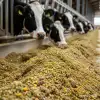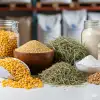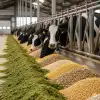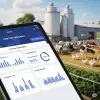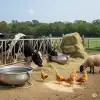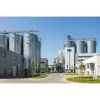Alternative Feed Sources: Economical and Efficient Options for Your Farm
Learn how to reduce feed costs on your farm with alternative feed sources like beet pulp, bran, and middlings. Discover these by-products for economical and efficient feeding.
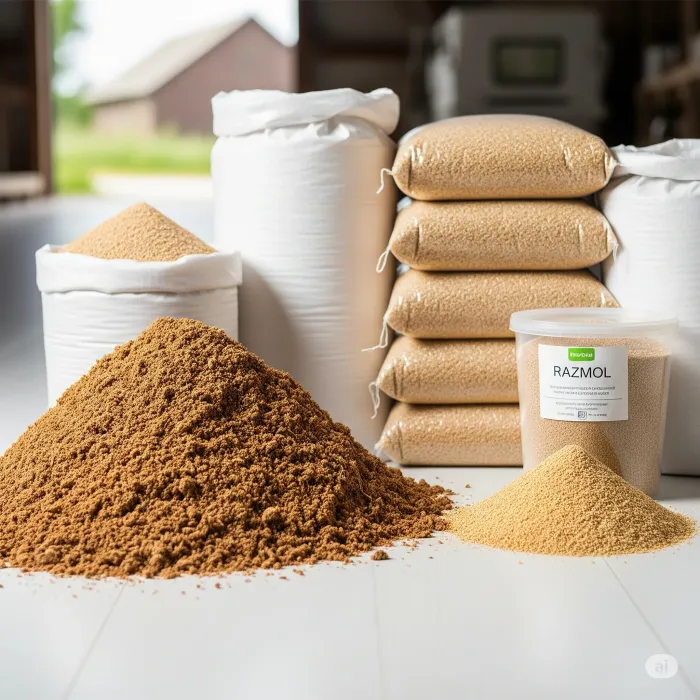
Alternative Feed Sources: Economical and Efficient Options for Your Farm
Feed costs are always on the minds of farmers in animal husbandry. Fluctuations in the prices of traditional feed raw materials necessitate seeking alternative solutions. So, what are the alternative feed sources that can be both economical and efficient while meeting your animals' nutritional needs? Products like **beet pulp, bran**, and **middlings**, when used correctly, can provide great benefits to your farm.
Why Do We Need Alternative Feed Sources?
By-products remaining from industrial and food production are valuable resources for animal nutrition. These alternatives are generally more affordable than traditional feed raw materials. Furthermore, utilizing these products contributes to the environment by reducing waste. In short, alternative feed sources are important for sustainable livestock farming, both economically and environmentally.
---Prominent Alternative Feed Sources
1. Beet Pulp: A Source of Energy and Fiber
The remaining pulp after sugar is extracted from sugar beets in sugar factories is called **beet pulp**. It can be found in fresh, dried, or pelleted forms.
- Nutritional Value: Contains high digestible fiber and energy. It is very beneficial for the rumen health of ruminants, especially cattle. Its protein content is low.
- Uses: Widely used in rations for dairy and beef cattle. Fresh pulp has a high water content, making storage and transport more difficult; therefore, it is usually used as silage or in dried form.
- Advantages: Increases feed intake due to its palatability. Supports rumen health and helps reduce the risk of acidosis. It is generally affordable.
2. Wheat Bran: Fiber and Balancing Agent
**Bran** refers to the outer layers and some inner parts of wheat that are separated during the milling process to produce flour. It is a by-product quite rich in fiber.
- Nutritional Value: Regulates the digestive system with its high fiber content. Has moderate protein and energy. It is also rich in minerals (especially phosphorus).
- Uses: Generally used as a balancing feed in the rations of all animal species. It is particularly effective in preventing constipation issues.
- Advantages: Regulates digestion and increases intestinal motility. It is generally readily available and reasonably priced. Adds bulk to the ration.
3. Middlings: Source of Energy and Starch
**Middlings** (often referred to as razmol in Turkish context, closely related to wheat middlings or shorts in English) is an intermediate product from flour mills that passes through finer sieves than bran but is not as fine as flour. Its starch and protein content are higher than that of bran.
- Nutritional Value: Contains higher energy (starch) and protein than bran. Due to its finer structure, it may be easier to digest.
- Uses: Used in various animal rations to meet energy and protein requirements. It is particularly suitable for animals that need quick energy.
- Advantages: Can contribute to rapid weight gain due to its high energy content. Can enhance feed palatability and encourage feed intake.
Considerations When Using Alternative Feed Sources
- Nutrient Analysis: The nutritional values of these products can vary depending on their source and processing method. It is important to have them analyzed before incorporating them into rations.
- Balance and Proportion: Although economical, they should be used in specific proportions within the ration. Excessive use can lead to digestive problems or nutrient imbalances. Consult a nutritionist to determine the correct proportions.
- Storage: Fresh by-products (like beet pulp) are particularly difficult to store and prone to spoilage. Proper storage conditions (ensiling, drying) prevent feed loss.
- Quality and Hygiene: Ensure that the products you purchase are of good quality, clean, and free from harmful substances. Moldy or contaminated products can harm animal health.
Conclusion
Alternative feed sources like beet pulp, bran, and middlings offer great potential for reducing feed costs and increasing farm profitability. However, using these products with proper knowledge and planning is vital to maintain the health and productivity of your animals. By incorporating these resources into your rations according to your farm's specific needs, you can both contribute to the environment and ease your financial burden!

